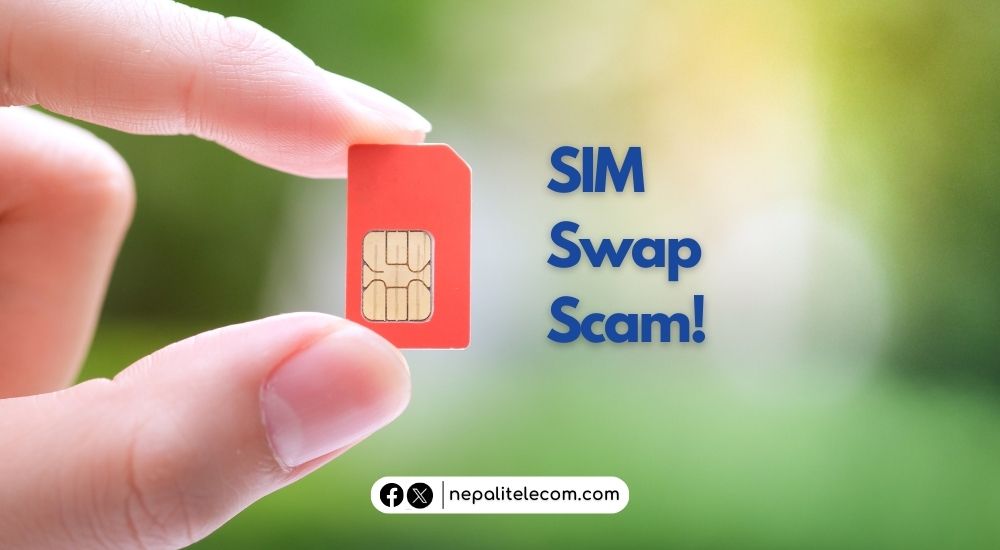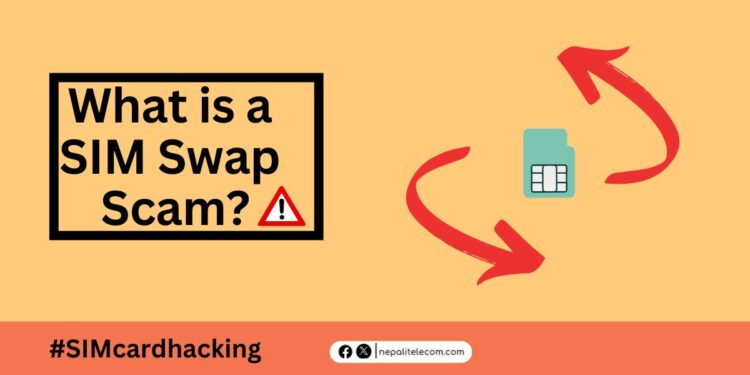SIM Swap scam is a brutal form of cybercrime that’s growing by day nowadays. Also called, SIM Swap fraud, such scams involve a fraudster targetting their victim’s mobile number to get access to their personal information for illegitimate gains, such as to extract money. Mobile banking and digital wallet app users can fall victim to this digital crime therefore, caution must be taken. Therefore, this post provides information on what a SIM Swap scam is, how it works, what you should do when this happens, and more.
What Is a SIM Swap Scam?
A SIM Swap scam is a situation when an unknown person, likely a scammer takes control of a phone number by faking as its original owner. The fraudster does this to access personal details to make financial gains. The scammer in such a context asks a carrier to port the target number into their own to facilitate their unlawful design. For this, they try to convince the carrier that they are the rightful owner of the SIM card.
Scammers use the victim’s personal information visible on social media or buy if possible from the dark web to ease their way. Attackers can also use phishing, emails, and links to persuade the victim into giving away their details. SIM Swapping has different names too. It is also called “SIM jacking” or “SIM card hacking.” Recommended: NTA Will Soon Implement Mobile Number Portability

Using the victim’s data, they can convince the telco to transfer the target number to another SIM profile. Once they get the SIM number, they bypass any two-factor authentication attached to the number. Then they easily gain control of the victim’s phone and accounts. When this happens, the attacker can access mail, banking details, credit/debit card info, social media accounts and details, etc. Most often, the money and vital personal details are at stake.
Recommended for you: Ntc requests customers to use SIM cards registered in their name to ensure safety on digital platforms
There Are Instances of SIM Swap Scam in Nepal
SIM Swap or phone scams are possible for any mobile phone user. If you have ever heard of a “red-colored” number calling or got suspicious links on your social media feed, then those are ways to gain access to your vital personal data. Mails and messages announcing cash prizes or containing unofficial links urging you to send your data are additional ways scammers try to fraud you.
Recently, there was news of an eSewa user losing money after falling prey to a SIM Swap fraud. Poor SIM car registration procedure allowed the fraudster to gain unauthorized access and extract money from the victim’s eSewa account. An inadvertent sharing of personal information can allow scammers to gain access to our social media or bank accounts. One can only be alert not to let this happen. Something similar happened to the Delhi woman we mentioned above. We have details on it below down the lines.

Besides, you may also want to know about the one-ring fake missed calls “Wangiri scam” and another phone scam in Nepal. In both these cases, scammers used fake calls to victimize their targets. These prove that Nepal is not untouched by SIM fraud instances. The instances are actually growing as more people resort to digital services.
What Can You Do To Prevent SIM Swap From Happening To You?
Prevention is better than care. Here are the topmost protective measures that help you ward off a possible SIM Swam scam:
- Don’t share your personal information: Never share your personal data with anyone. It’s the most important factor to save yourself from falling prey to a SIM Swap fraud. The extent of misuse by the attacker has no limit. It’s safe not to divulge our important data with ourselves.
- Use your SIM only: You must ensure that the SIM card you are using is in your own name. If the owner is a different person, if close to you, that means you don’t have the authority to manage it in other matters except for just calling, SMS, and data. If you need to transfer ownership or replace the SIM, your carrier provider first determines if the SIM is under your name. Because after using it for a long, it’s possible to ignore or forget who is it registered to. But this very thing is too important. Be your SIM card’s legitimate owner.
- Careful with receiving calls: Receiving calls from unsaved numbers isn’t necessarily harmful however, attackers use this to extract your details. Since SIM Swap requires telcos’ original owner’s info, fraudsters try to extract details that allow them to convince the service provider to port the existing number to another. Therefore, determine who you are talking with but still keep your passwords, date of birth, and other vitals to yourselves.
- Never share OTPs and passwords: The worst you can do is share your OTP and passwords which gives scammers direct access to your social media, mobile banking apps, digital wallets, and other digital services. And you know what could transpire after that. In fact, you should practice changing your passwords in between to escape easy guesses.
- Beware of phishing links, messages, and emails: Scammers use different methods to extract and fish out their targets’ personal info. One of their particular vehicles is phishing links and emails. You may see a tempting message announcing that you have won a prize and asking you to fill out a form to claim it. Then in your email’s inbox, you may get links from sources unknown. WhatsApp has become the favorite vehicle for scammers these days. Scammers send you a prize announcement and ask for your phone number, bank details, and other info that can be used for SIM Swapping. Always follow the right sources for information, and never click or tap on links and messages that you can’t verify the rightful source. Just ignore and delete them. You should also block such numbers or sends for future security.
Do read: How To Buy A SIM Card in Nepal?
What To Do After a SIM Swam Attack?
If you fall victim to a SIM Swap attack, these are the first things you must do:
- Block your SIM card. As soon as you realize that you have been “SIM-Swapped”, turn off your phone, contact your mobile network provider, and ask them to disable your SIM card. This helps the fraudster from using the number for any purposes further which require an active SIM service.
- Contact the bank: Contact your bank or digital wallet services to disable your accounts including credit/debit card services. Since the fraudster may already have access to your bank and mobile wallet accounts, call them to freeze accounts. Also, consider transferring the money to another account to keep it from rogue hands.
- Tighten your social media security: Chances are that you have used your phone number in your social media accounts. Remove them if possible and also disable Two-Factor Authentication (2FA). Change your passwords to lock the attacker out of your Facebook, Instagram, and other accounts.
- Log out from devices: Facebook, Instagram, Gmail, etc., lets you log out of devices on which you have signed in. After changing your password, make sure that you “check the option” to log out of all other devices. This forces the attacker to log in again and due to the changed passwords, the attacker may lose access to your social media accounts, and other digital services.
- Contact the police: While contacting your carrier service is a priority, you will also need to call the police to nab the fraudster and prevent this from happening to others. Also, bringing the scammers to the judicial procedure discourages potential attackers from making any hacking attempts.
Check out: How to register your phone in MDMS in Nepal?
Final Suggestions
Anyone who uses a mobile phone can experience a SIM Swam attack. The digital landscape has no fixed boundary and people can become subject to various forms of attacks initiated online or via phone calls. Judging by such incidents, people of old age or those who are indifferent or gullible have been the victims of it. We suggest that if you ever suspect a situation on you, then follow the measures we mentioned above and immediately call the authorities.
This may also interest you: Possibility to Buy A SIM Card Without Documents As NTA Prepares A ToR
SIM Swap scam could happen to any mobile user at any time. Be alert and conscious of any potential attacks and protect your credentials and resources.













